
Self portrait—G. McEvoy
I am fortunate to have moved from New York state to the Deep South (Mobile, AL) when I was young. At the time I thought, ‘Oh my God, what are we doing here, what have we done? This place is dreadful!’ But I grew to like it, and I learned things about southern music, literature, food, and culture that I never would have known otherwise. Sadly, my mother could never embrace southern culture. For her, it was always something to mock even though she was an actress and enjoyed doing Tennessee Williams plays. But she never fully appreciated Mobile and The South for what it could offer. I didn’t either at first, but I came to appreciate it later.
"Southerners make fun of themselves in a way that people in other parts of the world don’t. They know they’re a little extreme, with the big hair and the strong accents and the beer drinking and red-neckery. But the extremes are what they like to poke fun at in themselves."

Loco Weed
McEvoy, Grace—2019
Our backyard in Mobile was very deep, and it butted up against the back parking lot of a fast food restaurant called Colonel Dixie Hamburgers. We were right in the inner-city, but in the backyard there was this wonderful banana tree and all this open space. So at age fourteen, I decided to dig up the yard and turn it into a garden. I don’t even know how I got the seeds for it. I probably cashed in some old bottles and cans to pay for them. But the backyard became my area, my project to work on, and that garden did very well as I recall.

Birdhouse Gourd
McEvoy, Grace—2020

Echinacea
McEvoy, Grace—2020

Curled Vine
McEvoy, Grace—2020

Carolina Berry
McEvoy, Grace—2020
We sure got into some strange things as kids. For instance, after the Six Flags Amusement Park went out of business and closed down, we would sneak in sometimes because there was a live gorilla there in a cage. I’m really not sure why it was still there—it must have been part of the attractions, and apparently someone was still coming in to feed it. So we started bringing it oranges because it really liked oranges, and it also liked to smoke cigars. And God knows how we figured that out!
"We would light the cigars and hand them to the gorilla and he would smoke them."
Honestly, I don’t know how we knew to do this. I had cousins there, so maybe they told us about this cigar-smoking gorilla. But he really was quite tame and sweet, and when you would hand him an orange, he’d sort of pet your hand, almost like a thank you.

Red Passionflower
McEvoy, Grace—2020
By the time I was fifteen, I was going out with friends to these gay bars in downtown Mobile in this area we called the tragic triangle. We were underage, of course, but the gay bars would let us in because they didn’t give a damn. I’d usually go with my friends David (now Dena) and Rita, and we’d just hang out at these bars and drink and play pool and dance and do whatever. And since there weren’t a bunch of straight men bothering me, I had the freedom to dance any crazy way I wanted to and just be myself. That was part of the appeal, I suppose, aside from drinking and smoking cigarettes and just having a blast.
The drag shows back then were mind-blowing—just unbelievably innovative and nutty. Like, there was one performer who would come out on stage in a coffin, and she had big white hair and dramatic make-up and she’d emerge from her casket and do this blues number about someone trying to kill her. So the concept was that she was the murder victim, singing to her murderer. And there would be dry ice, and she’d walk around the audience singing to us. It was just incredible!
"It was like this tiny little crappy bar somehow transformed into Kabuki theater. Looking back, it was just such a privilege to be part of that whole scene in that moment in time."

Brigitte Bandit in Austin
McEvoy, Grace—2020
An Early Fascination with Film & Photography

Lily & Esparanza
McEvoy, Grace—2020
When I was a child, I once made a short film out of paper. I cut up paper strips and drew pictures on them, and I put a flashlight in a shoebox and made a little projector. Then I projected my film, which was more like a slide show, onto the wall. I could not have been more thrilled with my contraption because it actually projected my drawings! I was attracted to filmmaking and photography at an early age, but then one of the things I discovered when I eventually worked on documentary films was that when you’re shooting, you can’t talk to the people who are in it. I always wanted to stop the filming and just sit down and ask them questions.
When I was in school at the University of South Carolina in Columbia, I worked for the University Museum and part of my job there involved traveling around the state with folklorists and photographing artists and artwork. I also worked in the photo lab for the University newspaper, and I shot for the city paper, the Columbia Record. I started as a stringer at the Record, which is the lowest level on the totem pole, and it means that they give you the assignments that no one on staff wants. They would only pay you if your image ran, so it was to your advantage to try to do a good job. It was hit or miss work, but it was a good way to get published and to get better quickly.
They would send me off on assignments like shooting high school football games, which was hilarious because I knew nothing about football. But I’d bring a friend along and he’d tell me what was happening and who to focus on. So I’d hold the camera up to my face and these players twice my size would come running at me, and I’d try to shoot and jump out of the way at the last second. It was totally ridiculous.
Then after photographing something, you would turn your film in to the photo lab and someone would process it and make your prints. But they would only make you a few, and they wouldn’t make you a contact sheet so you’d have to choose the images to be printed by looking strictly at the negatives. It was nuts, but it forced you to get good at checking the focus, making sure people’s eyes weren’t shut, and identifying who was in the shot. Then you would have to wait until the next day to find out if any of your photos ran in the paper. Crazy as it was, that process pushed me to get better because I knew the paper wasn’t going to keep me around if they weren’t running my photos.
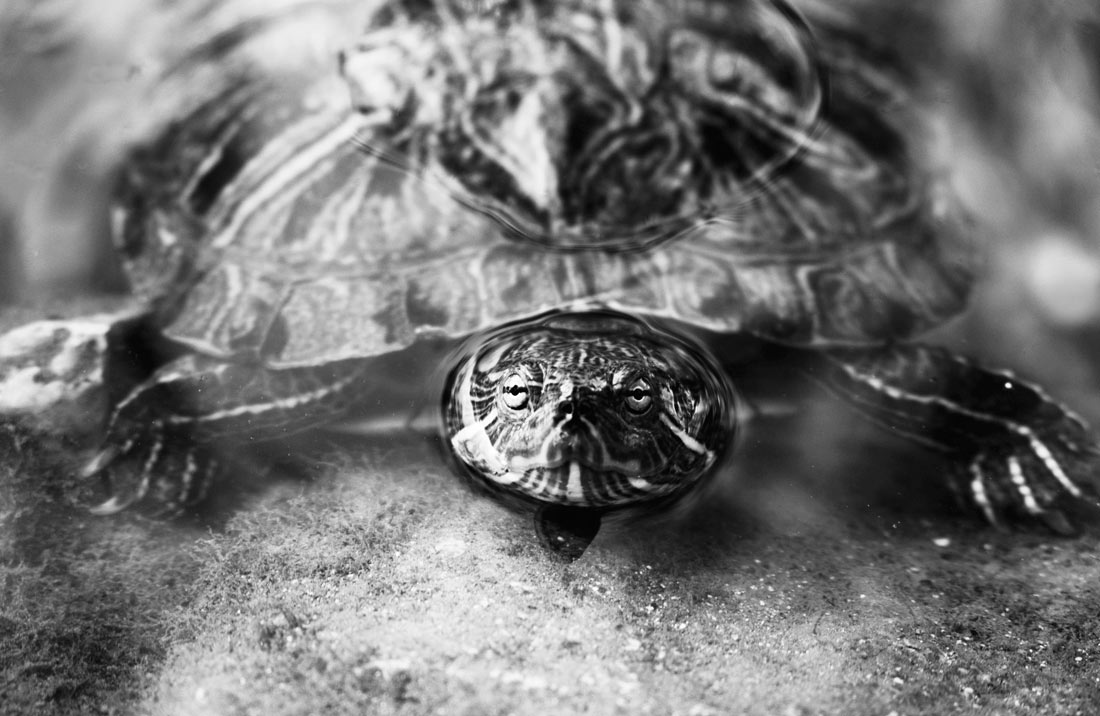
Turtle
McEvoy, Grace—2020

Pride of Barbados
McEvoy, Grace—2020

Hollyhock
McEvoy, Grace—2020
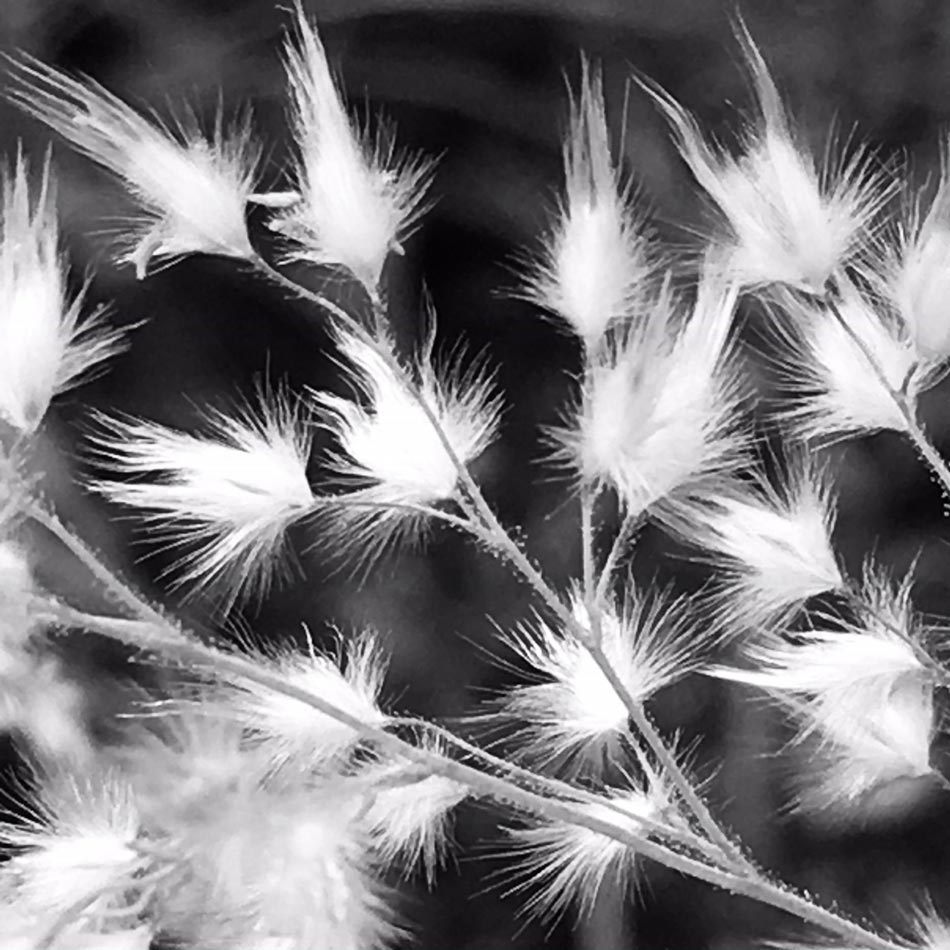
Native Grasses
McEvoy, Grace—2020

Wood Violet
McEvoy, Grace—2020
Capturing Moments

MIss Stephanie
McEvoy, Grace—2017
I have a fascination with performers, probably because my mother was an actress and because I had performer friends like Dena as I was growing up. I just like photographing people when they’re busy doing things and not paying attention to me. It can be a lot of fun to get in the middle of whatever it is that they’re doing. I find that more interesting than trying to pose people, which I can do, but I don’t enjoy it as much.
I once went to a tattoo convention here in Austin, and they had some completely bizarre performances going on, including an off-beat drag artist, a sword swallower, and pole dancers. Intriguing subjects, but unfortunately the stage was totally makeshift and the lighting was terrible, so I’d have to wait forever for a drag queen or someone to finally get into the light so that I could get a decent photograph. I just held the camera up to my face, waiting.

Burlesque Mummy
McEvoy, Grace—2017
I once photographed a burlesque show where this woman came out as a mummy and proceeded to unwrap herself under this crappy lighting. It actually ended up being a fun challenge for me, just trying to catch her in a moment under the light.
One Halloween, I started taking photos of this ghost that was wandering the streets of downtown Austin. He was just a drunken guy in a sheet, but then this girl crossed in front of him and things changed. They didn’t know each other at all, but this flirtation seemed to occur, which I thought was funny.

Ghost & Girl
McEvoy, Grace—2017

Animal Print Jacket
McEvoy, Grace—2017
I like photographing people from behind sometimes, not because I’m trying to avoid them, but because I enjoy that perspective. A photo like that can create a bit of mystery that leaves you wondering, What the heck is going on there?
When I’m photographing an event, I always try to talk with the people around me beforehand. I’m a friendly person regardless, but I make a special effort to chat with them because it can be helpful later on when I’m trying to get a shot. You might think that a petite person like me would be at a disadvantage when shooting an event, but sometimes it can be an advantage, like when I photographed Chrissie Hynde at the Austin Music Awards. There were a lot of photographers there and it was toward the end of the evening and I was getting tired, just wandering around, not getting much. Then Charlie Sexton suddenly announces, Ladies and gentlemen, Chrissie Hynde! So of course all the photographers started moving toward the best place to take photos. But I’m small and fast, and I just zipped right up and got a prime spot in front.

Chrissy Hynde
McEvoy, Grace—2018
Capturing Nature
Sometimes when I stop to photograph plants and bugs, I’ll spend a lot of time just watching them. I’ll get lost in their world, and I won’t pay much attention to what’s going on around me. But then later, when I finally stand up and look around, I’ll realize that I’ve been somewhere else completely.

Cross Vine
McEvoy, Grace—2019

Swallowtail Catepillar
McEvoy, Grace—2019

Mantis
McEvoy, Grace—2020
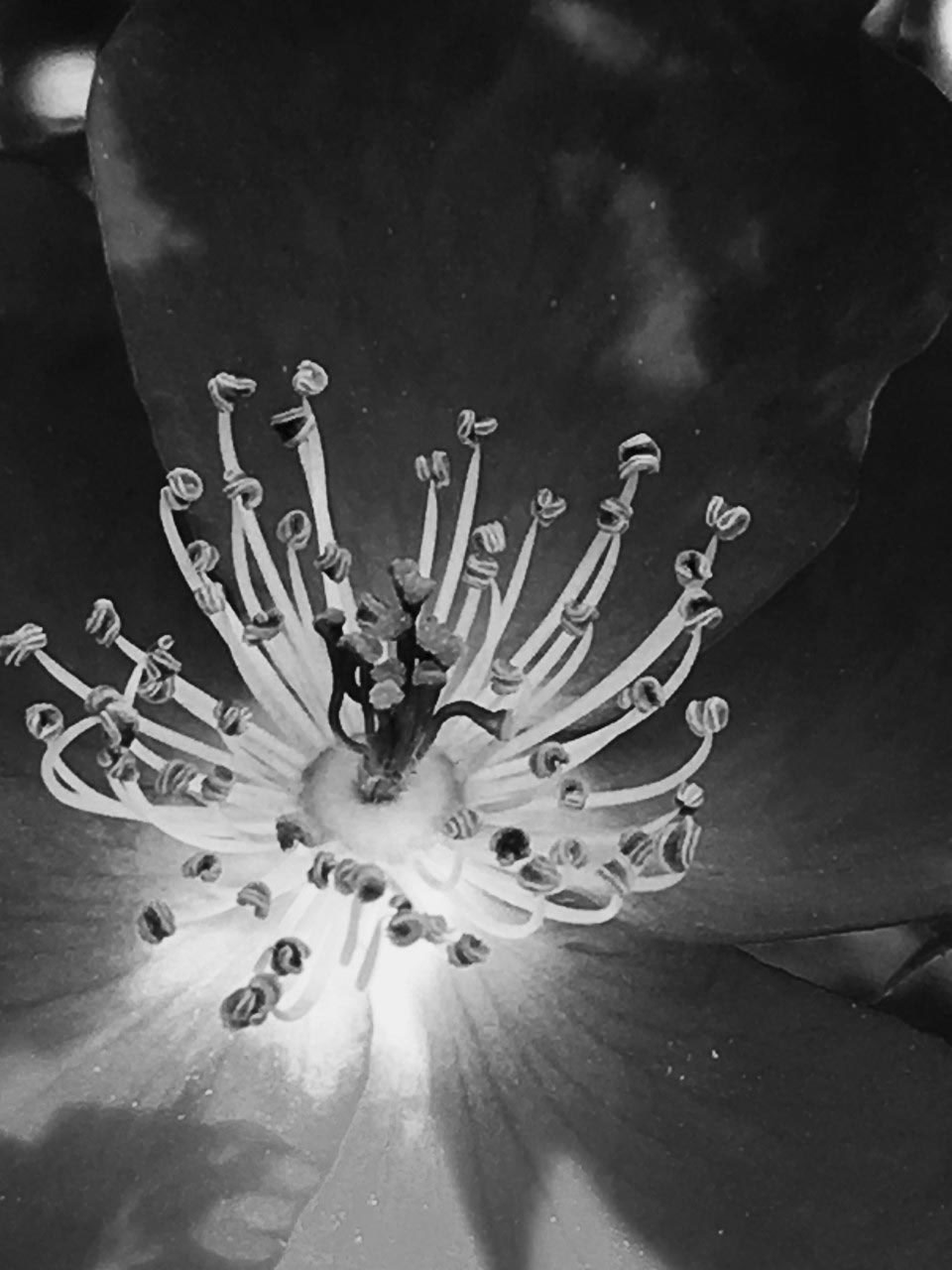
Knock Out Rose
McEvoy, Grace—2019
Balance and symmetry is built into nature, and you can even see it in the way plants grow. When a plant emerges from the seed, it splits in two and then it splits off again and again, and that symmetry is universal. So when I photograph flowers and plants, I’ll see these tiny seedlings that have popped up, and I’ll be reminded of the symmetry that’s inherent in biology and that we respond to visually. But with photographs themselves, I don’t need them to be symmetrical. In fact, I often prefer that they not be. It just depends on the subject matter.
Seeing beauty provides some kind of psychological benefit to me and to humans in general, I think. Even the objects in my living space are important because if they are unpleasantly arranged and there’s a sense of chaos, it makes me agitated and I’ll have to fix it. I’m actually a little baffled by people who don’t have any interest in aesthetics at all. That must be a very different way to live, where you don’t need that. But for me, beauty and a certain attention to aesthetics offers something calming to my brain that makes me feel like things are right in the world.
Our Changing World

Bouganvillia
McEvoy, Grace—2020
When everything turned digital 20-some years ago, there was a lot to learn, and I had resistance to it. I actually loved being in the darkroom, listening to music and books on tape while printing, and I didn’t want to give that up. But I had to whip myself into shape, accept reality and adopt this new way of making photos and managing images. So that’s what I did.
The good news is, we don’t have to deal with all those chemicals anymore. We were also throwing away a lot of bad prints and wasting paper back then, and using a lot of water just washing prints. I prefer digital now for all of those reasons. But it was a tough transition at first.
"All manner of hell is breaking loose in the world right now with climate change and other things. But the plants and insects just keep on doing their thing. Maybe that’s part of my fascination, just watching them go about their business in spite of us."
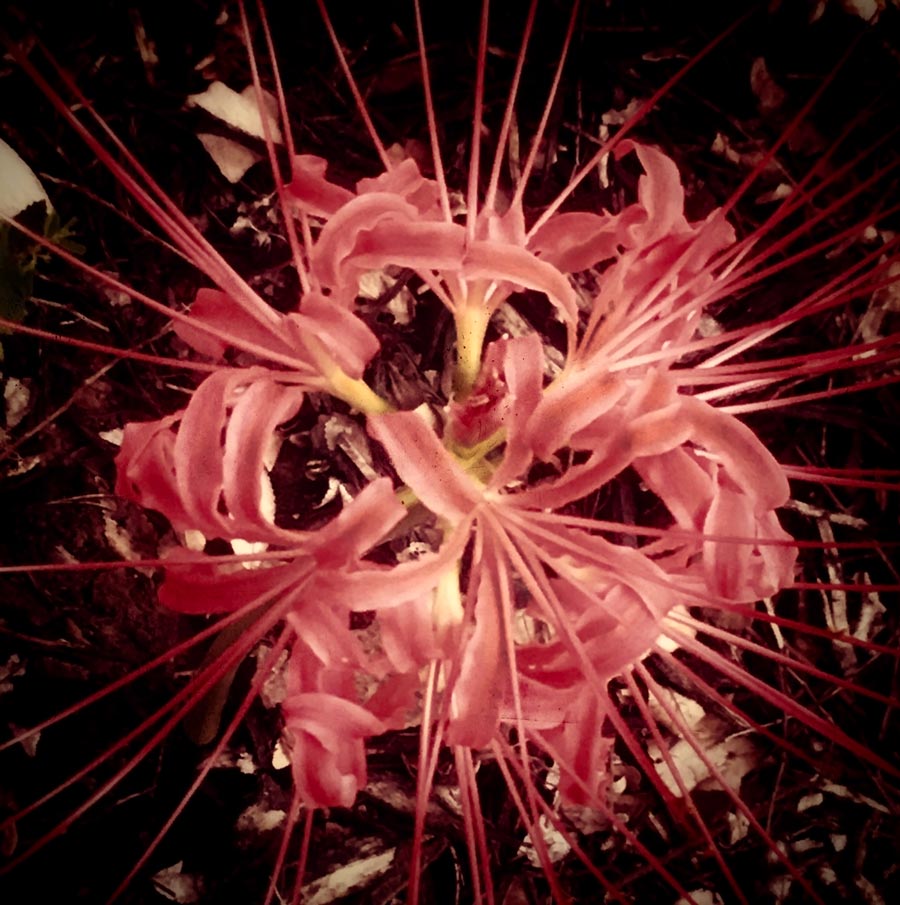
Spider Lily
McEvoy, Grace--2019
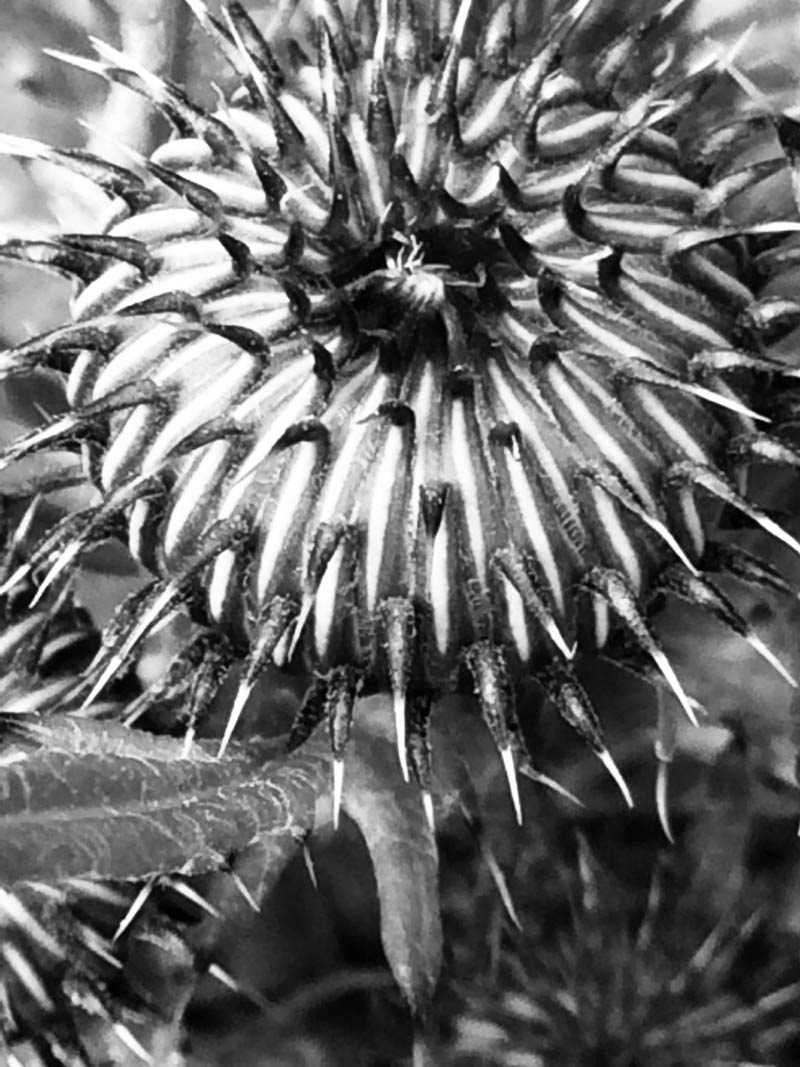
Thistle
McEvoy, Grace—2020
We really don’t deserve this planet. I mean, we’ve been given this wondrous world, and yet, with all our abilities as humans, we’ve somehow made a mess of it. So now we have to totally rethink the way we do things, change our bad habits, and clean up our mess quickly. It’s very upsetting, especially when you think about your kids. My son asked me a question about this recently which left me speechless. I was asking him if he was going to register for school and return to college, and he said, “Yeah, I guess I will, but I’m concerned about the planet and what it’s going to be like in ten years.” He was essentially asking me, “What’s it going to be like for us, Mom? Should we even make plans?” In that moment, I didn’t know what to say.
"In most of my parenting history, I have been able to come up with answers, something sensible. But this was like, "I don’t have an answer for this."
I can’t tell him it’s going to be fine, because I’m not sure it is going to be fine. I guess what upsets me most is that I realized years ago that I didn’t have much faith in humanity to really step up and do what needs to be done. And I still don’t. I didn’t say that to my son, but what I did say is: “I am going to continue putting as many things in the positive column as I can; and I am going to do whatever I can to make things better.” The truth is, we may be headed straight for disaster, but I’m not going to just throw my arms up and accept it. That’s why, when I started doing Instagram (@mcegrace), I decided it was going to be about plants. I chose that focus because if there’s one thing in the world I want to know more about and spend more time with, it’s plants—particularly flowers.
Seeding the Future
"It seems magical, putting seeds in the ground and then plants grow."

Peony
McEvoy, Grace—2018

Turtles in Barton Creek
McEvoy, Grace—2019
There are a lot of fascinating things to do in life. It’s there for the taking, but you have to go looking for it and that process can sometimes be hit or miss and frustrating.
I have pursued a lot of things in my life that didn’t necessarily work out, but that’s okay. That’s how you learn. That’s essentially my advice for the younger generation: pursue the things that interest you, including the people that interest you. There may be people out there who you think are smarter than you or out of your league, but just start talking with them and see what happens. As my friend, Sam, once said to his tiny daughter on the playground, “Hey, see that kid over there, that’s your friend, you just don’t know each other yet.”
I say this now because I used to have a fear of rejection and looking the fool. I went through that for years when I was young—trying to figure out how to stop sabotaging myself because of this irrational fear. And even though you know it makes no sense to be going through all this agita, you do it anyway. It’s hard to stop
Random Seeds of Kindness
I remember this time when I was seven and I knew my mother’s birthday was coming up and I wanted to give her something special. Somehow I got my hands on these Morning Glory seeds, and I started growing them on the window sill in my bedroom. Nobody knew, it was my little secret project. So when my mother’s birthday finally rolled around, I surprised her with these pretty flowers that I had grown myself.

Grasshopper
McEvoy, Grace—2020

Ranuculus
McEvoy, Grace—2017
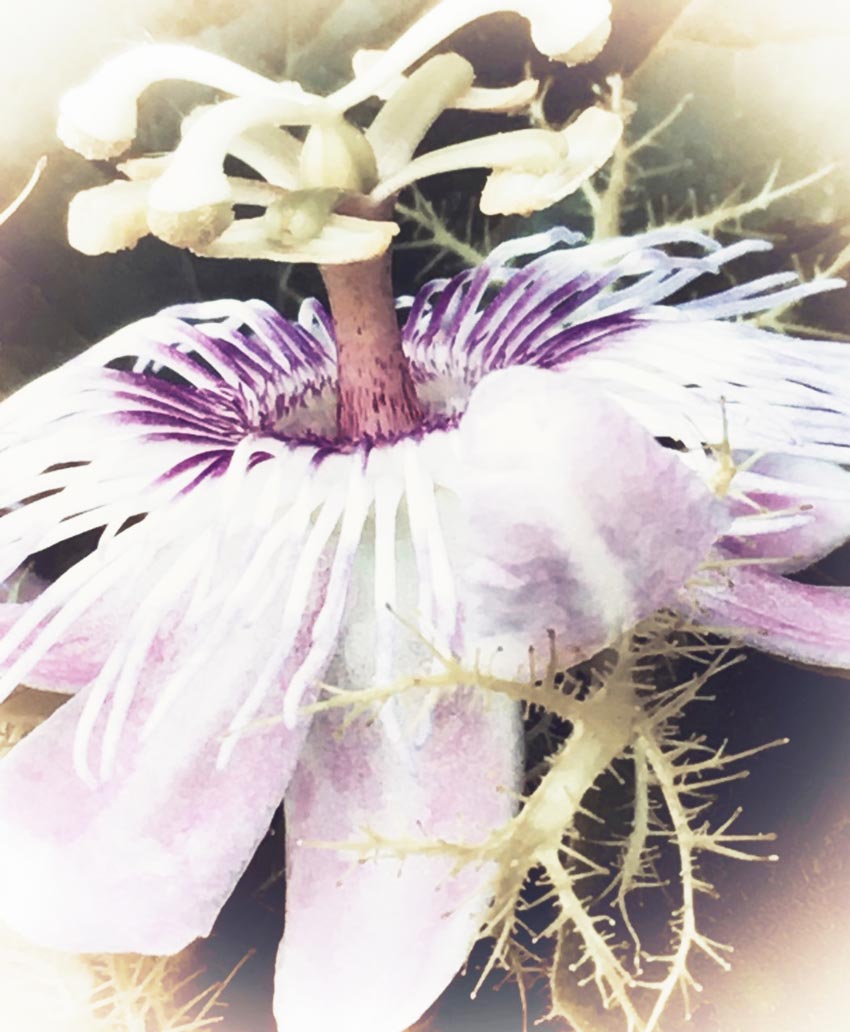
Passionflower
McEvoy, Grace—2017
Flash forward to today, and I’ve gotten to know all these flowers really well. I’ve started collecting seeds and looking up the ways to properly collect the seeds of a particular flower. With a lot of them, you have to let the seed heads die because if you try to collect before that, things won’t dry properly and the seeds won’t be viable. So I’ve been figuring out which ones you treat that way. I have a tray full of tiny envelopes of seeds that I’ve collected—packages and packages of them. I planted some recently in a bed around a tree in my backyard, and I even ran a test a while back by putting seeds in my neighbor’s flower bed and in a park nearby. Lo and behold, they came up!
I plan to seed bomb some other locations in my neighborhood and downtown, too, so that I can go back and see what has taken root and grown. I plan to do a lot more of that kind of thing in the months and years to come. It’s going to be fun to see what takes root and grows!

Grace McEvoy, Portfolio:
